Seaweeds of the South African South Coast


Order Ceramiales
Family Rhodomelaceae
Pterosiphonia stangerii (J.Agardh) Falkenberg 1901: 270
Plants dark red to blackish, comprising extensive rhizomatous axes bearing erect branches ca. 20 mm high. Erect branches complanate, 2-3 times pinnately branched from every second or third segment in alternate series; bases of laterals confluent with main axis for three or four segments. Segments with five pericentral cells and secondary cortication that incompletely covers pericentral cells; segmentation visible in all parts of plant; axes compressed, with narrow “wings” mainly at junction of main axis and abaxial side of laterals; axes up to about 0.5 mm wide and about half as thick. Tetrasporangia in apparently rectilinear series in ultimate branches, with two long and one short cover cell, up to 80 µm in diameter. Antheridial stands cylindro-conical, subapical on laterals; male trichoblasts without sterile branches. Female reproductive structures not seen.
Collections ecology and regional distribution
Recorded from Swartklip (False Bay) along the south and east coasts to northern Kwazulu-Natal (18-58). Found in the lower eulittoral and shallow sublittoral zones.
Worldwide distribution: Southern African endemic: also recorded from Mozambique (Silva et al. 1996).
Type locality: Port Natal (Durban), South Africa (Silva et al. 1996).
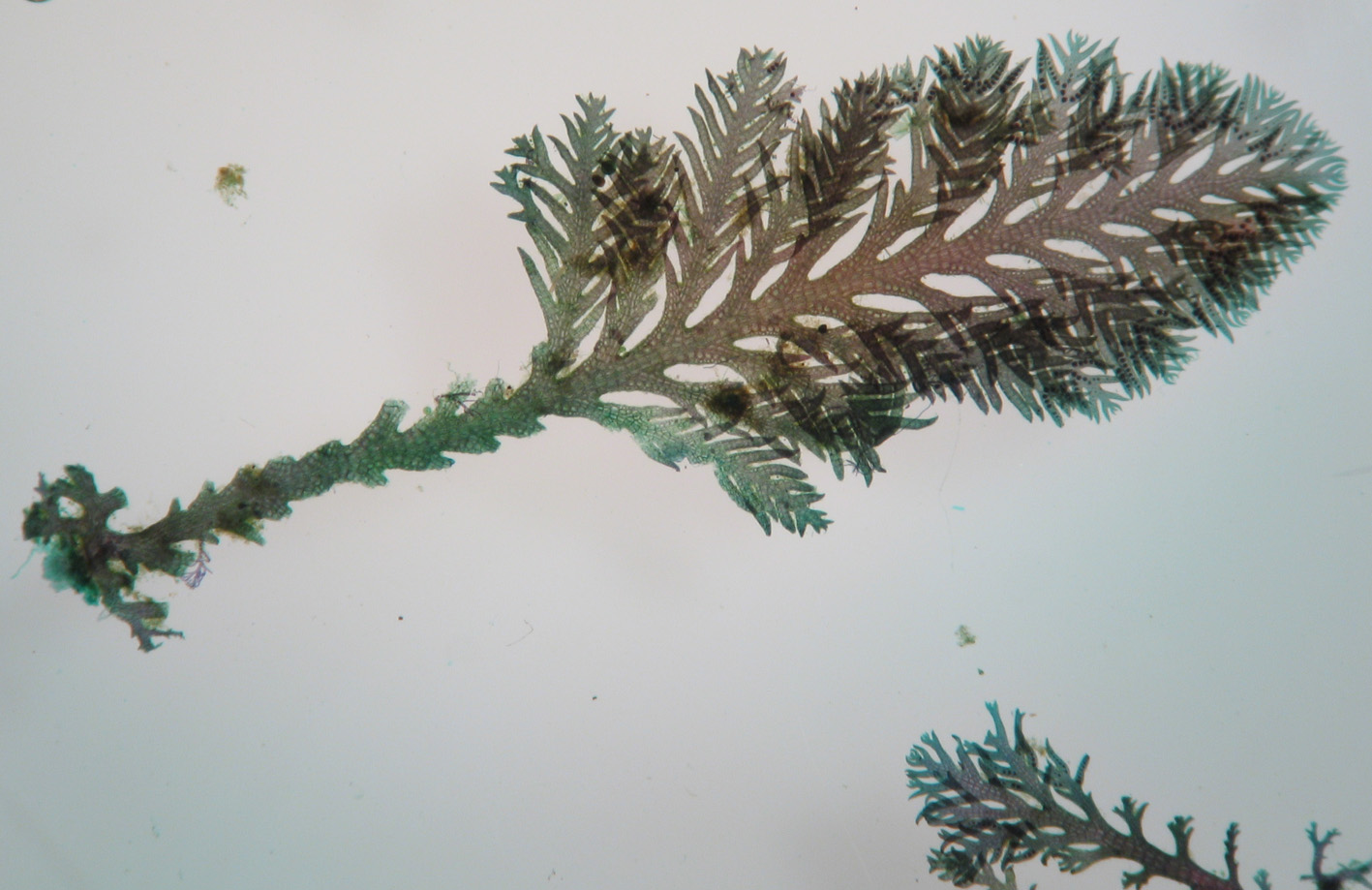
Pterosiphonia stangerii, Kenton on Sea (stained slide material).
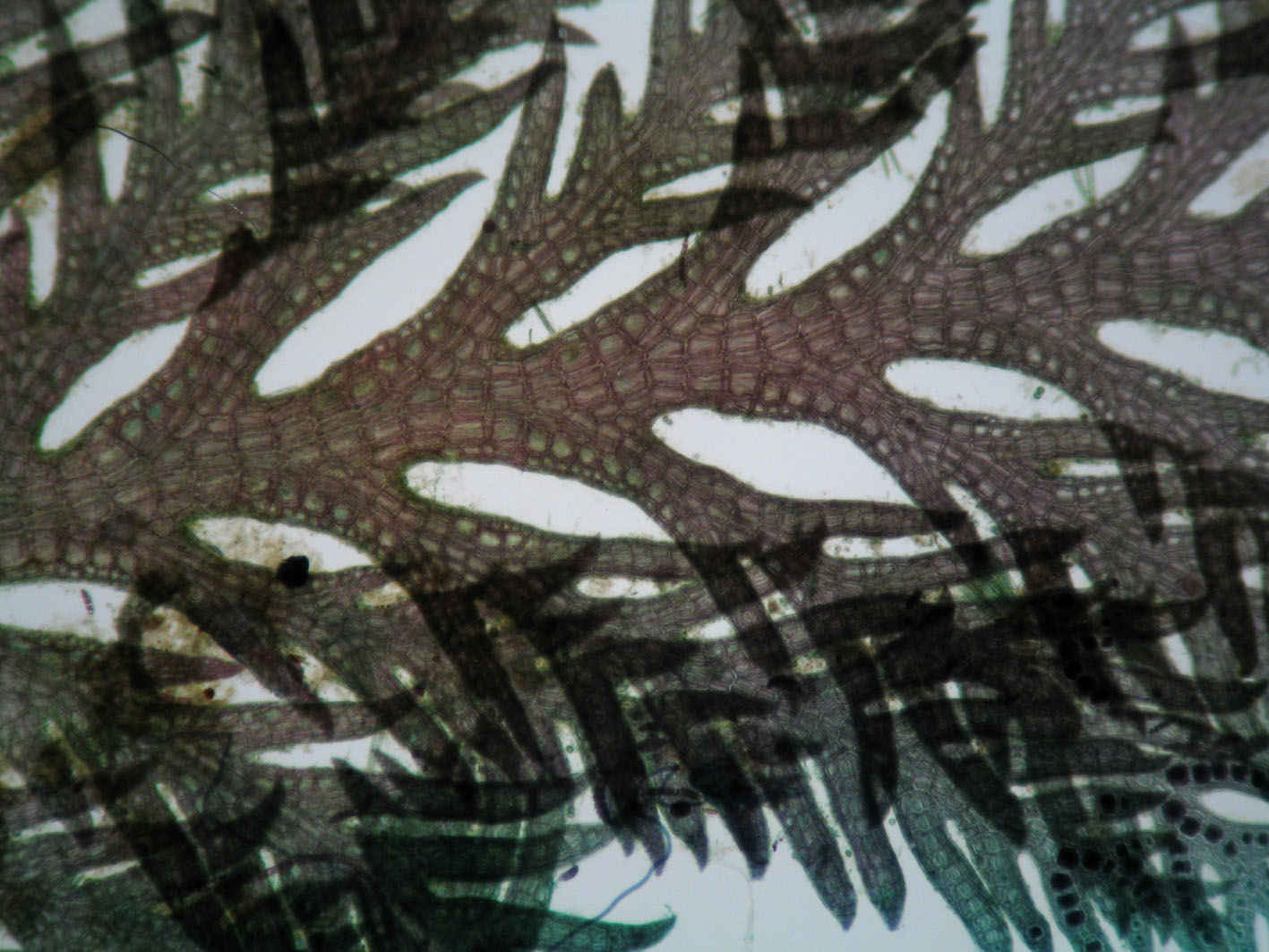
Pterosiphonia stangerii, Kenton on Sea, showing cell detail (stained slide material).
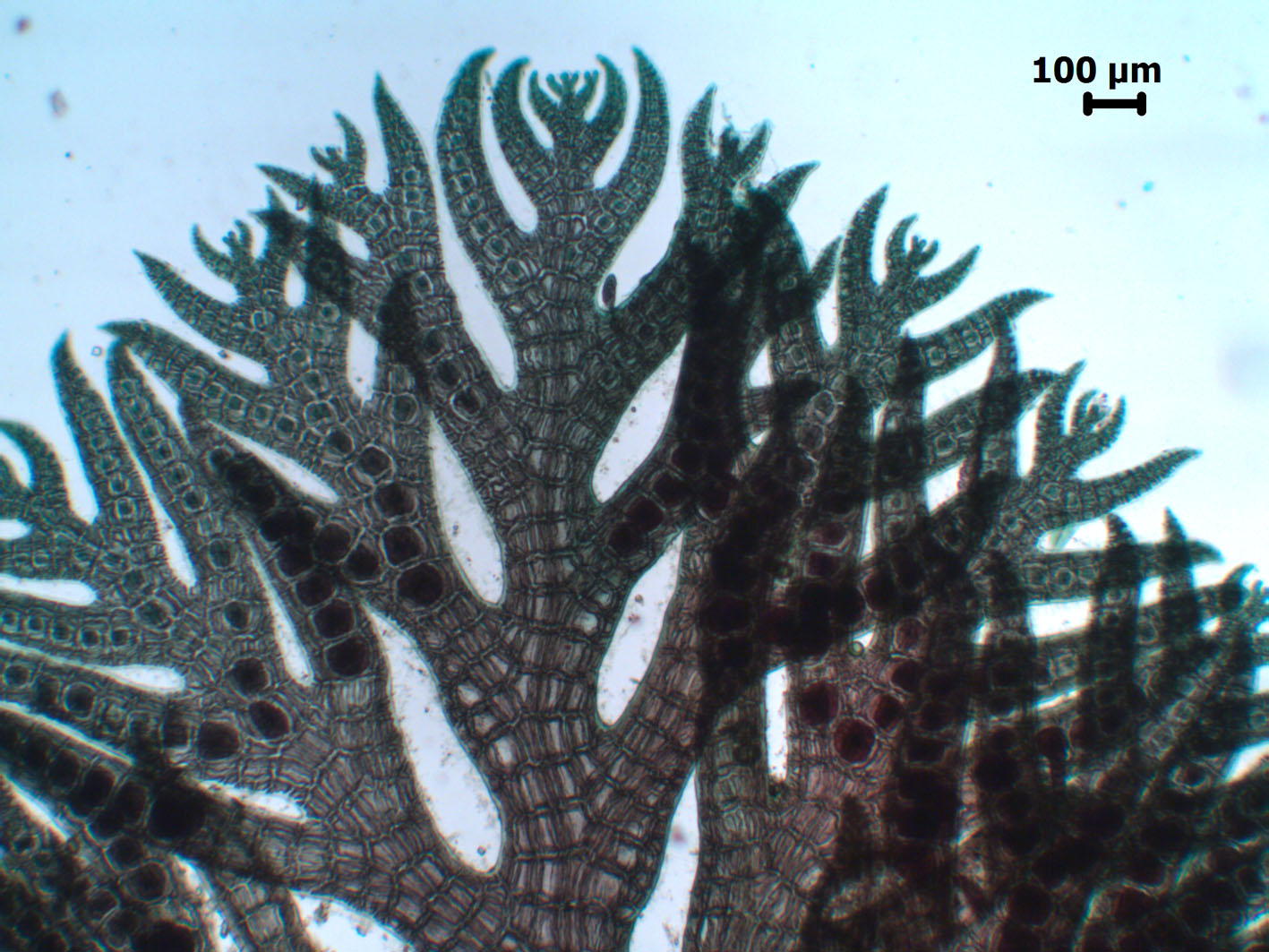
Pterosiphonia stangerii, Kenton on Sea, showing tetrasporangia (stained slide material).
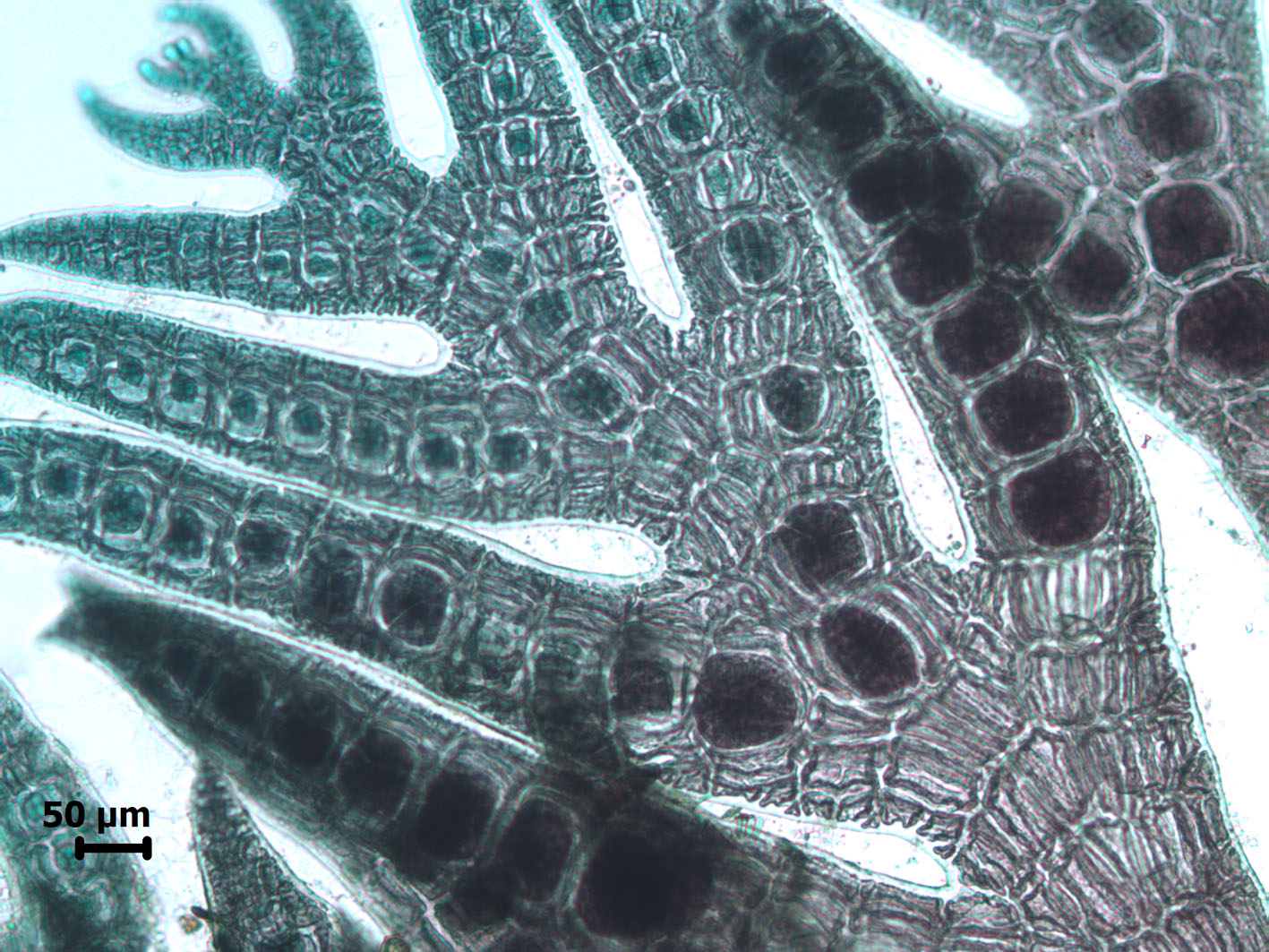
Pterosiphonia stangerii, Kenton on Sea, showing details of tetrasporangia (stained slide material).
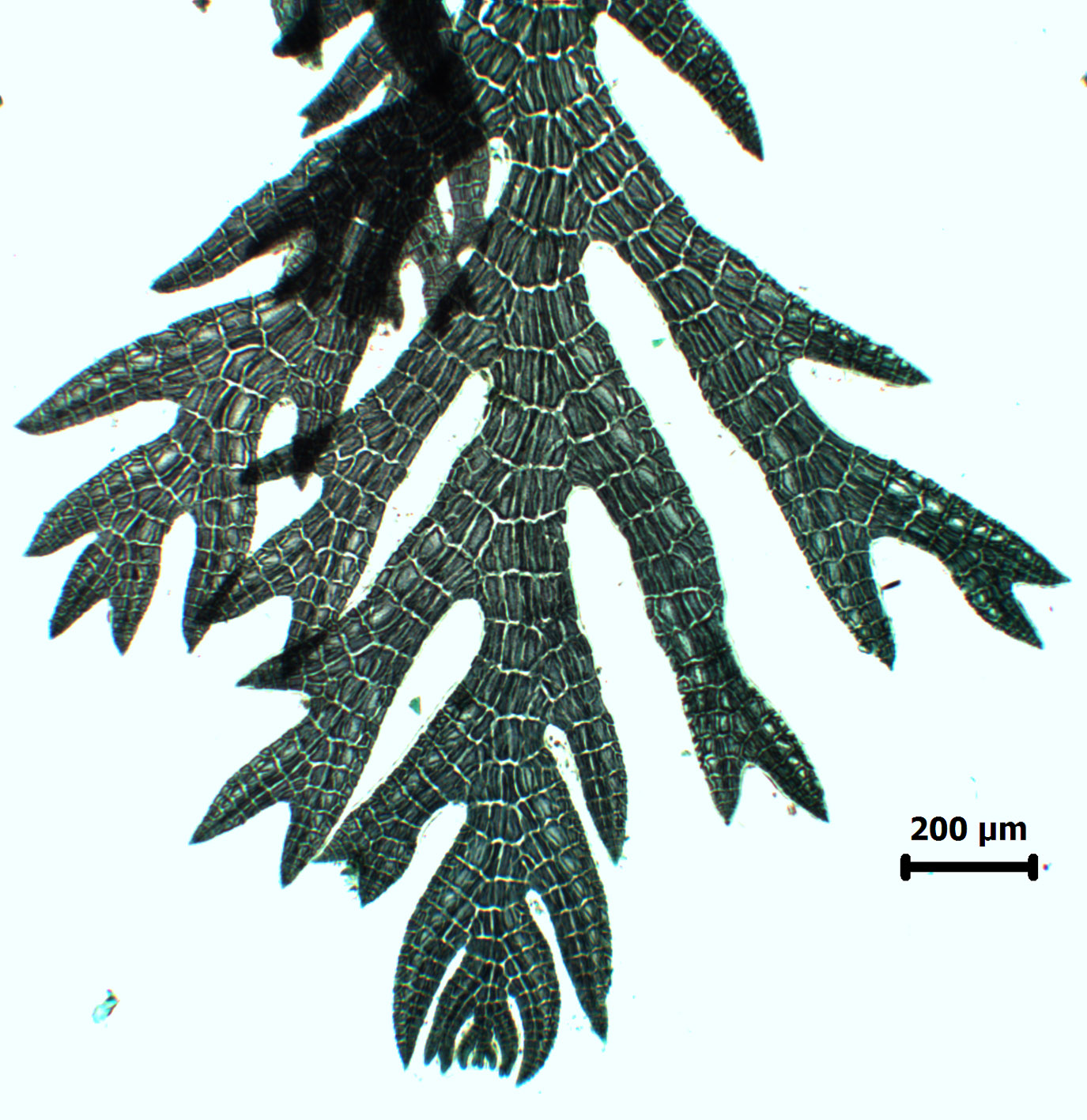
Pterosiphonia stangerii, Port Alfred, (stained slide material).
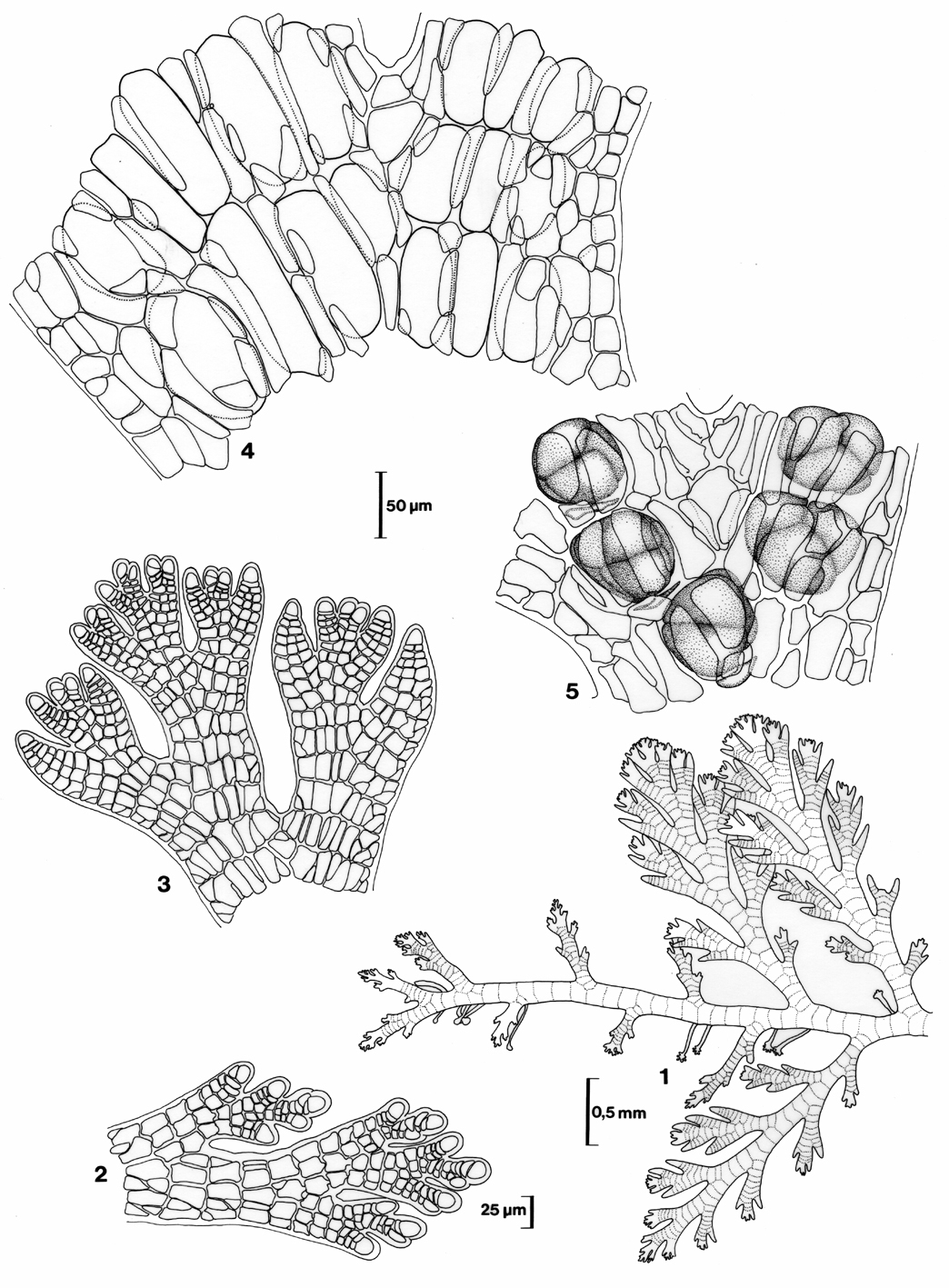
Pterosiphonia stangerii 1. Microscopic habit, showing prostrate and erect axes. 2. Apex of prostrate axis. 3. Apex of erect axis. 4. Mature segments. 5. Tetrasporangia. Reproduced from Stegenga et al. (1997).
References Pterosiphonia stangerii
Falkenberg, P. 1901. Die Rhodomelaceen des Golfes von Neapel und der angrenzenden Meeres-Abschnitte. Fauna und Flora des Golfes von Neapel, Monographie 26. pp. i-xvi, 1-754, 10 figs, 24 pls. Berlin.
Silva, P.C., Basson, P.W. & Moe, R.L. 1996. Catalogue of the benthic marine algae of the Indian Ocean. University of California Publications in Botany 79: 1-1259.
Stegenga, H., Bolton, J.J. & R. J. Anderson. 1997. Seaweeds of the South African west coast. Contributions from the Bolus Herbarium 18: 655 pp.
Cite this record as:
Anderson RJ, Stegenga H, Bolton JJ. 2016. Seaweeds of the South African South Coast.
World Wide Web electronic publication, University of Cape Town, http://southafrseaweeds.uct.ac.za; Accessed on 07 December 2025.